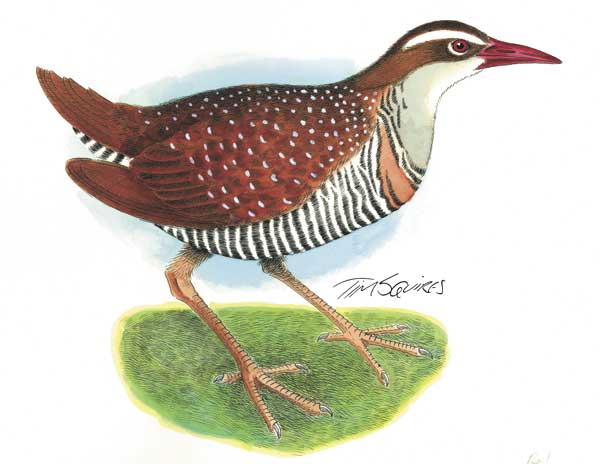
Every cloud has a silver lining, and so it was with a shock report earlier this year that revealed birds were vanishing faster in Australia than anywhere else in the world.
The international survey might have drawn attention to the growing number of species slipping towards extinction but it also revealed one place on the planet – MacquarieIsland – where the situation had been dramatically turned around.
The island has been the subject of a $24.7 million program to tackle feral animals devastating both birds and plant-life and the success of this was outlined by the Macquarie Island Pest Eradication project manager, Keith Springer, at a recent meeting of BirdLife Tasmania.
Springer said that after the successful eradication of cats in 2001 a program to rid the island of ships rats, house mice and rabbits began in 2004. Through poison ground-baiting and follow-up hunting with dogs all trace of rats and mice had vanished and the rabbit population had been reduced from more than 100,000 to a mere handful. These last remaining rabbits – which could number from two to six rabbits – were being tracked down by 14 hunters with 11 dogs in the post-baiting phase of the program which was ongoing.
Springer said that it was essential to find the last of the rabbits to prevent them breeding and building up numbers again.
The eradication of the pest animals has already seen a dramatic recovery of vegetation on the island, including tussock grasses that had been badly damaged by rabbits and other plant species like Macquarie Islandcabbage and silver-leaf daisy.
Birds had also returned, the young and eggs of nesting burrowing seabirds no longer preyed on by rats and regenerated vegetation providing cover for juveniles. In exposed locations on slopes that had lost vegetation these were easily picked off by aerial predators like skuas.
A detailed account of the recovery of seabirds is given by wildlife ranger Bree Hunter in the latest edition of the eradication project’s newsletter, Macquarie Dispatch.
Although it is too early to quantify numbers of all species winging their way back to their sub-Antarctic nesting ground, Hunter says she was buoyed by the number of active burrows she discovered this summer.
Most of her time is spent monitoring wildlife population trends on the island, with an emphasis on burrowing petrel species.
Hunter says data for one species of burrowing petrel indicates an increase in population. Prior to cat eradication, grey petrels had not been confirmed as breeding on the island for more than 100 years. After cats were removed, the first active burrows were found in April 2000 and some chicks fledged that year. The grey petrel is Macquarie’s only winter breeding petrel. Last winter it had the highest breeding success rate, at 87 per cent, since monitoring began in 2005, and was also found nesting in new locations.
The burrow occupancy of sooty shearwaters and white-headed petrels also appears to be higher. Blue petrels have been breeding for a number of years in low numbers on off-shore islands, with low fledging rates as a result of rat predation. This year there has been a big difference with hundreds of active burrows being found on the main island.
“There is plenty of evidence for optimism about Macquarie Island’s future if the eradication of introduced pests is ultimately successful,” Hunter says.
The Red List Index of threatened species globally revealed the status of Australian birds was declining faster than elsewhere in the world. And within Australia itself, Tasmania’s bird species had fared the worst in the past decade of any state and territory. The index, compiled every 10 years, shows an accelerating rate of Tasmanian species and subspecies sliding into worse categories, for example from vulnerable to endangered.
Island birds, even those on islands as big as Tasmania, are always worse off than mainland species because they are more easily over-run by introduced pests, and they lack defences against alien species, especially if they are burrow nesters or flightless.
One of the scientists involved in the survey, Charles Darwin University Research Fellow Dr Judit Szabo, said islands where areas where investments in eradication programs could really pay off.
“The big rat and rabbit eradication program on Macquarie Island could even turn the Red List Index around next time we calculate it,” Szabo said.